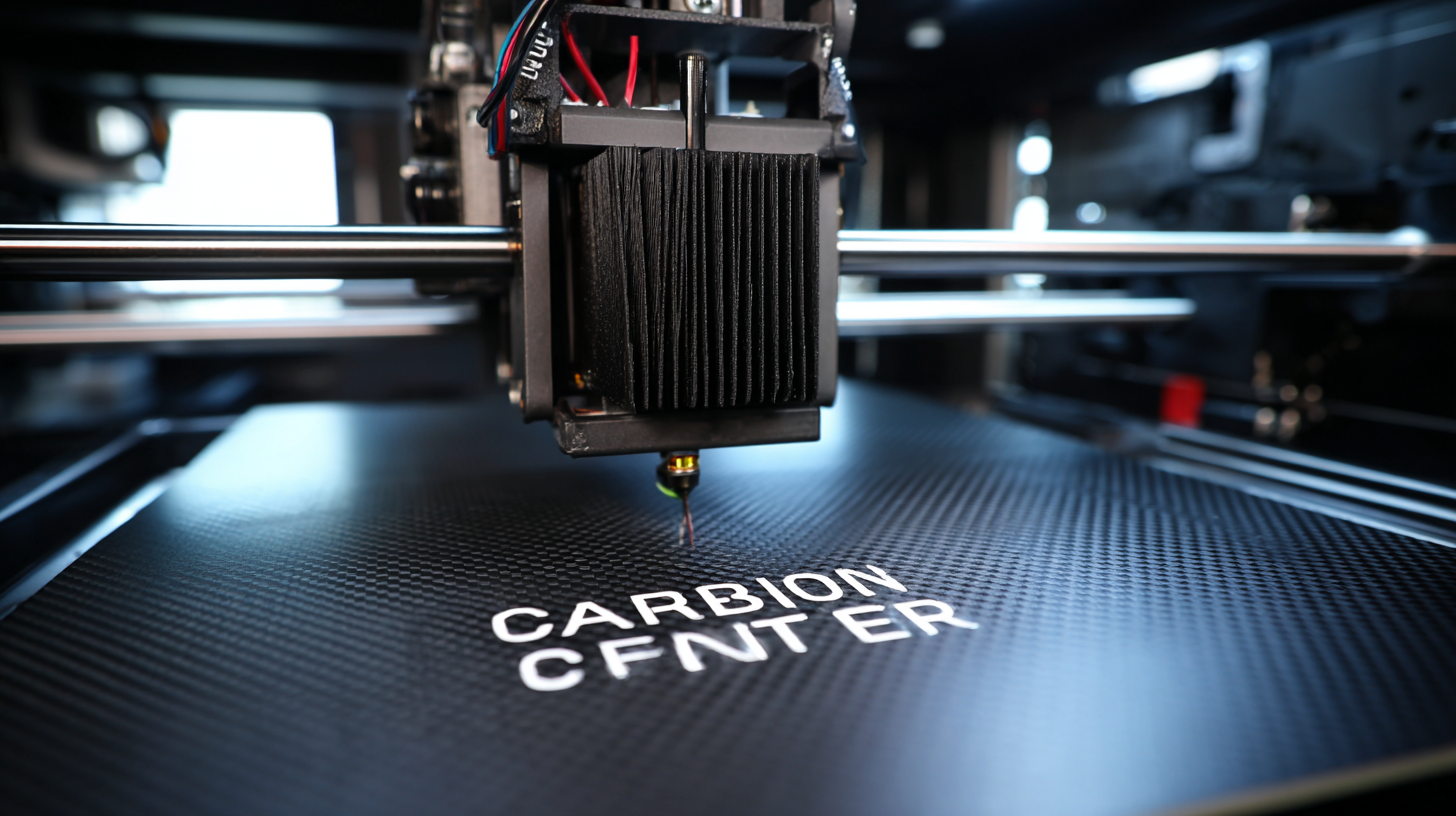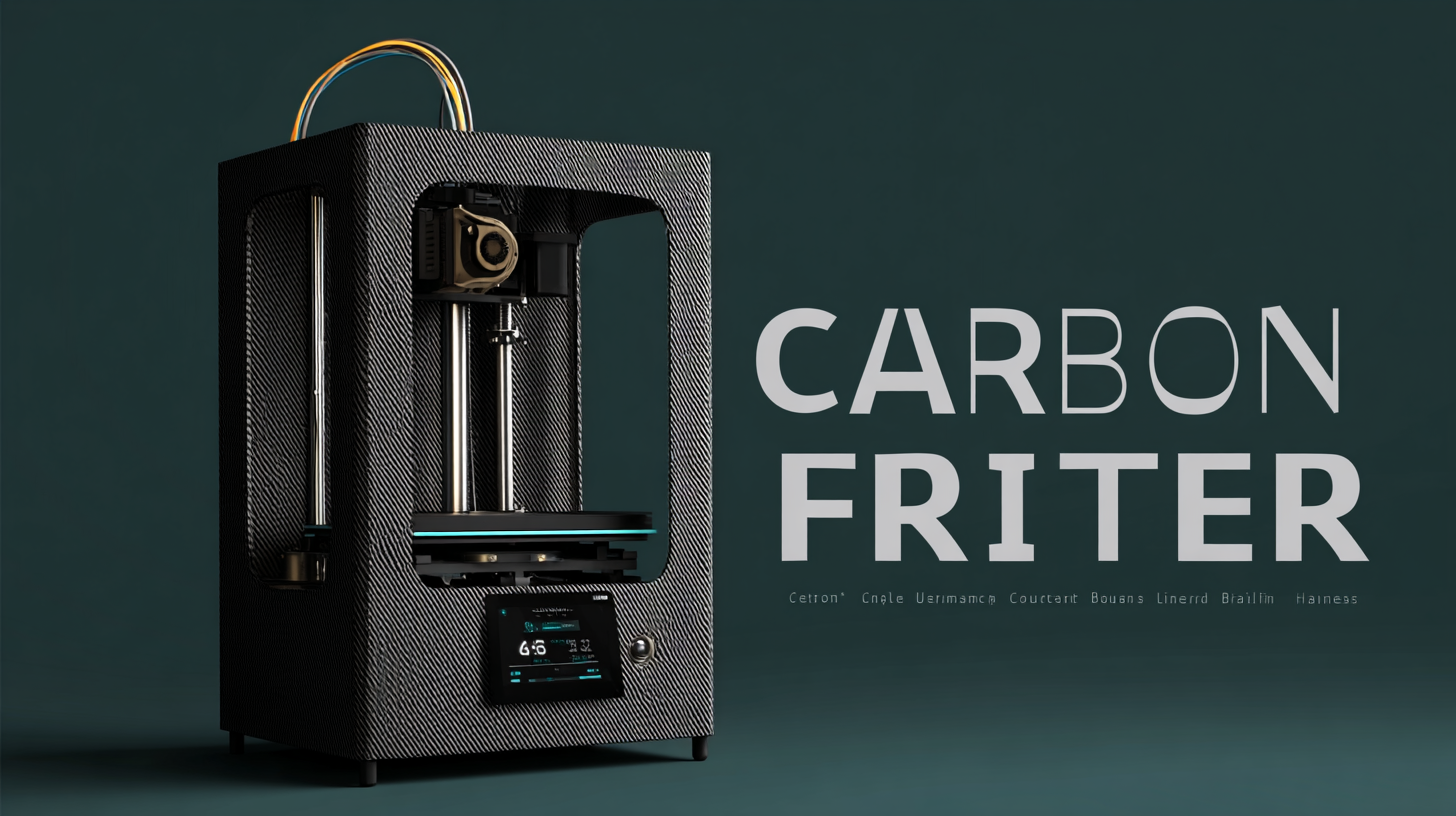Ultimate Guide to Choosing the Best Carbon Fiber 3D Printer for Your Business Needs
As businesses continue to evolve and adapt to emerging technologies, the demand for advanced manufacturing solutions is at an all-time high. Among these solutions, the Carbon Fiber 3D Printer stands out as a game-changer, offering unparalleled strength, lightweight properties, and flexibility when it comes to material innovation. In this ultimate guide, we will explore the critical industry trends for 2025, focusing on how advancements in carbon fiber technology can meet your specific business needs.

From understanding the various types of carbon fiber printers available on the market to assessing their implications for production efficiency and product quality, this guide aims to equip you with the knowledge necessary to make informed decisions. Join us as we delve into the features, benefits, and potential challenges of integrating a carbon fiber 3D printer into your business operations, ensuring you stay ahead in a competitive landscape.
Key Factors to Consider When Selecting a Carbon Fiber 3D Printer for Businesses
When selecting a carbon fiber 3D printer for business needs, several key factors should be considered to ensure optimal performance and efficiency. Firstly, understanding the specific application of the 3D printer is crucial. Different industries require varying levels of precision, strength, and size capabilities. For instance, aerospace and automotive sectors might prioritize tensile strength and material fatigue, while prototyping for consumer goods could focus more on print speed and surface finish. Therefore, identifying the primary use case will guide you in choosing a printer that meets your technical specifications.
Another critical aspect to evaluate is the compatibility of the printer with different materials. While carbon fiber is known for its robustness, the ability to print with a variety of composite filaments enhances versatility. Look for printers that support various types of carbon fiber filaments, as well as other advanced materials such as nylon and PETG, to widen your production range. Additionally, consider the ease of maintenance and the manufacturer’s support services, as these can significantly impact your operational efficiency and downtime if issues arise. Understanding these factors will help you make an informed decision that aligns with your operational goals.

Understanding Carbon Fiber Materials: Properties and Benefits for Industrial Applications
Carbon fiber materials have become increasingly popular in industrial applications, thanks to their unique properties that fulfill the growing demands for lightweight yet strong components. According to a report by ResearchAndMarkets, the global carbon fiber market is expected to reach $4.22 billion by 2025, driven by its adoption in aerospace, automotive, and manufacturing sectors. The exceptional tensile strength and stiffness of carbon fiber, which can be several times greater than that of steel, make it ideal for producing durable parts while reducing overall weight. This weight reduction often leads to improved fuel efficiency and enhanced performance in vehicles and aircraft.
Moreover, carbon fiber's resistance to corrosion and high fatigue strength positions it as a favorable choice for industrial applications that require longevity and reliability. A study from the Composites Manufacturing Association highlights that, in the automotive industry, components made from carbon fiber can reduce weight by up to 50%, translating to a significant decrease in greenhouse gas emissions. As manufacturers continue to explore the benefits of carbon fiber materials, investing in a high-quality carbon fiber 3D printer becomes crucial for businesses aiming to leverage these advancements for maximum operational efficiency and innovation.
Comparison of Carbon Fiber Properties for 3D Printing
Evaluating Printer Certifications: Importance of Industry Standards and Compliance
When selecting a carbon fiber 3D printer for your business, understanding printer certifications is crucial. Industry standards and compliance ensure that printers meet specific quality and safety measures, which can significantly impact your production processes. Look for printers that comply with international standards such as ISO and ASTM. These certifications often indicate that the printer has undergone rigorous testing for reliability and performance, ensuring that you invest in a reliable machine.
Tips for evaluating printer certifications include checking for third-party verification. A printer that has been validated by renowned organizations is typically more trustworthy. Additionally, consider the manufacturer's adherence to local and industry-specific regulations. This compliance not only reflects the printer’s safety but also its suitability for your specific applications. Always request documentation to confirm certification status before making a purchase.
Furthermore, ensure that the printer’s certification is relevant to your industry. For instance, if you're in the aerospace or medical field, specific certifications may be required to meet regulatory standards. Choose a 3D printer whose certifications align with the needs of your projects, ensuring that you maintain compliance while achieving high-quality results.
Cost Analysis: Budgeting for Carbon Fiber 3D Printing Equipment and Maintenance
When considering the adoption of carbon fiber 3D printing technology, a comprehensive cost analysis is crucial for businesses to ensure they are making a sound investment. According to a recent report by *3DPrintingIndustry*, the initial cost of carbon fiber 3D printers can range from $5,000 to over $100,000, depending on specifications and capabilities. For companies looking to produce high-quality, durable components, it's essential to account for not just the printer purchase but also the necessary supplies and materials—carbon fiber filament prices typically range from $30 to $100 per kilogram.
Maintenance costs further complicate the budgetary needs. Industry studies indicate that businesses should allocate around 15-20% of the initial printer cost annually for maintenance and repairs, including replacement parts and routine servicing. Additionally, training staff to efficiently operate and maintain the equipment can incur further costs, which are often overlooked in initial budgeting. By addressing these factors in their financial plans, businesses can better position themselves to leverage the benefits of carbon fiber 3D printing while mitigating unexpected expenses in the future.

Real-World Applications: Case Studies of Successful Carbon Fiber 3D Printing in Various Industries
Carbon fiber 3D printing has revolutionized various industries by providing lightweight, durable materials that enhance product performance. Case studies highlight its effectiveness in sectors such as aerospace, automotive, and healthcare. For instance, aerospace companies have embraced carbon fiber composites for constructing complex and lightweight components, resulting in significant reductions in aircraft weight and fuel consumption. This shift not only improves efficiency but also reduces operational costs, showcasing how advanced materials can transform traditional manufacturing processes.
In the automotive industry, manufacturers are leveraging carbon fiber 3D printing to produce parts that offer superior strength-to-weight ratios. This innovation allows for the creation of intricate designs that would be impossible with conventional methods, leading to vehicles that are not only lighter but also more fuel-efficient. Additionally, in the healthcare sector, customized carbon fiber implants are being developed to provide tailored solutions for patients, demonstrating the versatility and practical application of this technology across diverse fields. Through these real-world examples, it's clear that adopting carbon fiber 3D printing can drive significant advancements in product development and operational efficiency.
Ultimate Guide to Choosing the Best Carbon Fiber 3D Printer for Your Business Needs - Real-World Applications
| Industry | Application | Material Used | Printer Specs | Outcome |
|---|---|---|---|---|
| Aerospace | Lightweight structural components | Carbon Fiber Reinforced Polymer | High precision, large build volume | Reduced weight and increased fuel efficiency |
| Automotive | Prototype parts for testing | Carbon Fiber Nylon | Fast printing with durable output | Accelerated development and reduced costs |
| Medical | Custom implants and prosthetics | Carbon Fiber Composite | High strength-to-weight ratio | Enhanced patient outcomes and comfort |
| Consumer Goods | High-performance sports equipment | Carbon Fiber Reinforced PLA | Lightweight and aesthetic design | Increased sales and customer satisfaction |